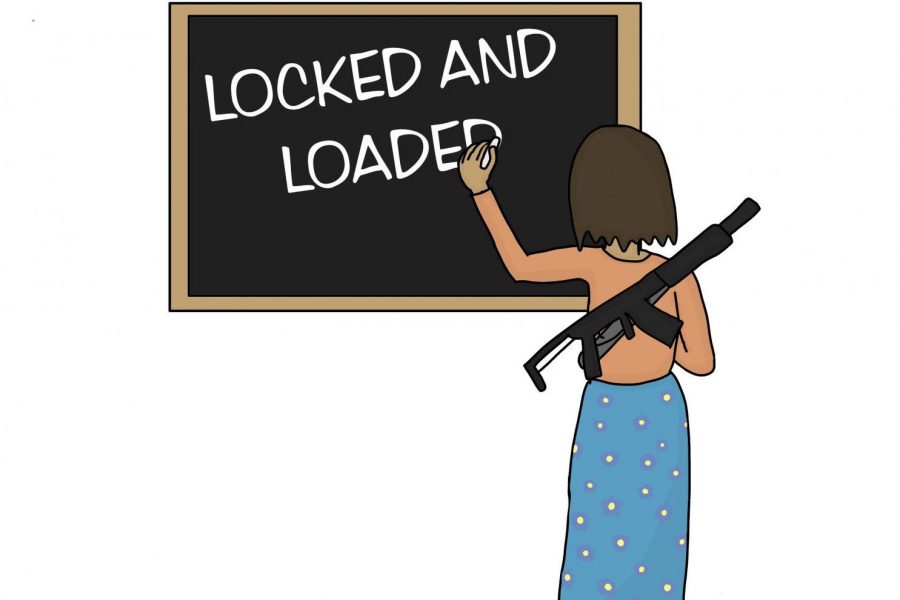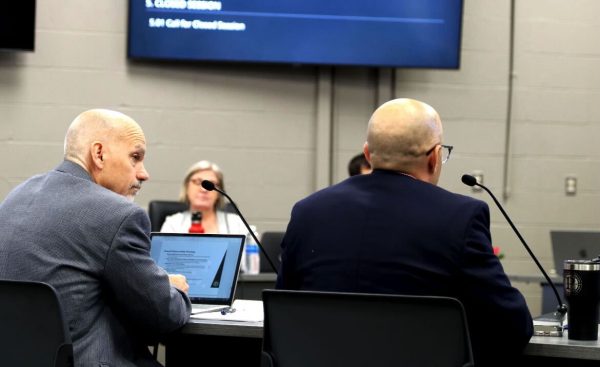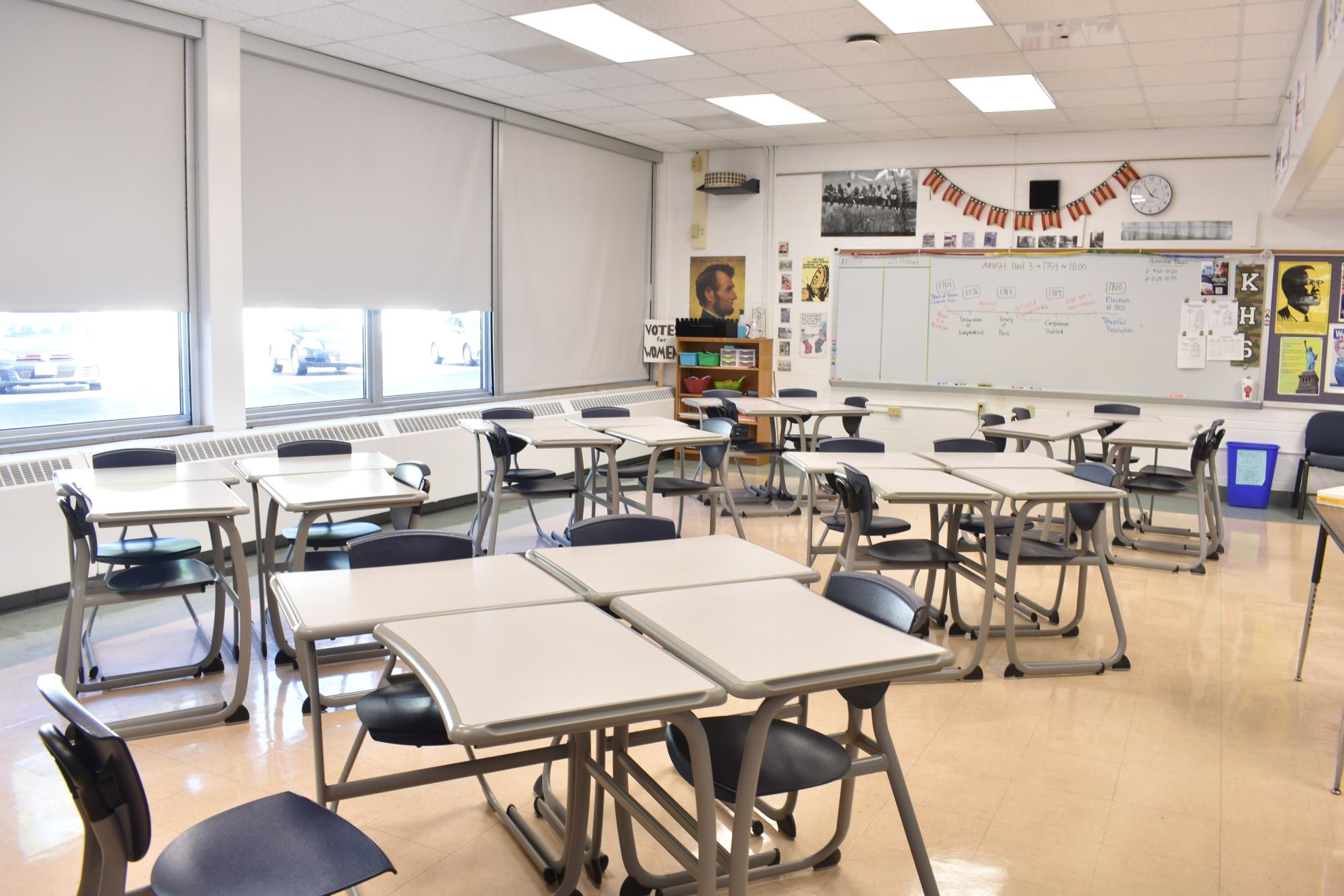Issues: Arming teachers
Virginia Tech. Stoneman Douglas. Sandy Hook. These are a few of 188 school shootings that have occurred since 2000. School districts across the country are now reevaluating their safety and security policies to adjust to the reality faced by American schools. At anytime someone can walk in with a gun and open fire. In order to keep the students and staff safe, some administrators and policy makers suggest the most effective option is to arm teachers.
According to Levaughn Smart, KSD coordinator of safety and security, KSD teachers are required to go through training under the ALICE program which stands for alert, lockdown, inform, counter and evacuate. Policies at KHS such as requiring teachers to have their doors locked at all times are set by ALICE. The training is required once a year and consists of a 30-minute lecture followed by 30 minutes of practical application.
Missouri legislators passed a law in 2014 making it legal for teachers to carry a gun if they go through 120 hours of special training in order to become a “School Protection Officer.” However, a teacher cannot make the decision to acquire a weapon and complete this training on their own. According to Smart, the policy must first be approved by the school board before allowing a teacher to carry a gun.
For rural Missouri school districts like Fairview in West Plains, the nearest first responders would not be able to arrive in time to prevent a tragedy. According Fairview Superintendent, Aaron Sydow, much destruction would be done by the time authorities arrive. Knowing this, some teachers have already been armed.
“I understand if you’re in a rural community where help is far away,” Smart said. “But at KHS we have myself and Officer Douglas. We can be anywhere in 30 seconds. At all the other campuses, help will arrive in less than five minutes, so we don’t have to worry about response time.”
At KHS, multiple police departments can be at the scene within minutes, and an armed resource officer is employed full time. Therefore, a staff member carrying a gun in KSD is not likely Smart said. According to Jennifer Pangborn, KSD board director, opposition allowing teachers to be armed has been expressed by both teachers and the board in a statement made by Superintendent Dr. Michele Condon.
The greatest weapon you’ll ever have is in between your ears,” Smart said. “If we teach them, train them and empower them to handle different things, that’s better than any firearm.
— Levaughn Smart
“We were all of the mind that this is not a good idea,” Pangborn said. “Putting teachers in that situation is not something we agree with.”
Many teachers, including Cindy Koehler, French teacher, feel strongly against arming staff members. Teachers like Koehler feel their purpose at the school is to teach and not carry a weapon.
“None of us got into teaching to be an armed defender,” Koehler said. “I would do almost anything and everything to protect one of my students, but I couldn’t carry a gun and worry about accidentally shooting one of them.”
According to Smart, once a teacher completes their initial training, the process is not over. They would have to practice their weapon systems often in the interest of becoming a “School Protection Officer” and would also need to keep their guns updated and in check with the local police department.
“In order to be able to get in the game, they would be shooting at least once a month,” Smart said. “Not only are they learning about Schoology and the new latest and greatest stuff, we would also have to get them on the range.”
In a number of school shootings, such as Columbine, the shooters were students who attended the school. According to Smart, it is difficult to predict whether or not a teacher would be able to discharge their weapon on a kid who they have possibly known for years.
“We’re asking a teacher who has seen a kid since they were a freshman, or maybe even since sixth grade to have the ability to flip that switch and become an aggressor,” Smart said. “That’s a whole lot to ask.”
According to Smart, KHS is better off educating teachers and students with the hope that a shot is never fired. He believes, ideally, this preparation and education can be done without the use of weapons.
“The greatest weapon you’ll ever have is in between your ears,” Smart said. “If we teach them, train them and empower them to handle different things, that’s better than any firearm.”
To combat school shootings in America, administrators and policy influencers across the country suggested arming teachers in February of 2018 after another school shooting in Parkland, Florida left 17 people dead. Schools in rural areas of Missouri have begun arming staff while school districts in urban areas revolve their policies around education and preparation among staff and students.
Your donation will support the student journalists of Kirkwood High School. Your contribution will allow us to purchase equipment and cover our annual website hosting costs.

Interests: Playing tennis, traveling and watching Netflix.
Favorite musical artist: Billie Eillish.
Favorite quote:“Whenever I’m about to do...

Interests: Cross country, art, playing with my dog, and watching Netflix
Favorite quote: “Sweet niblets!” -Hannah Montana
Favorite food: Chocolate...












